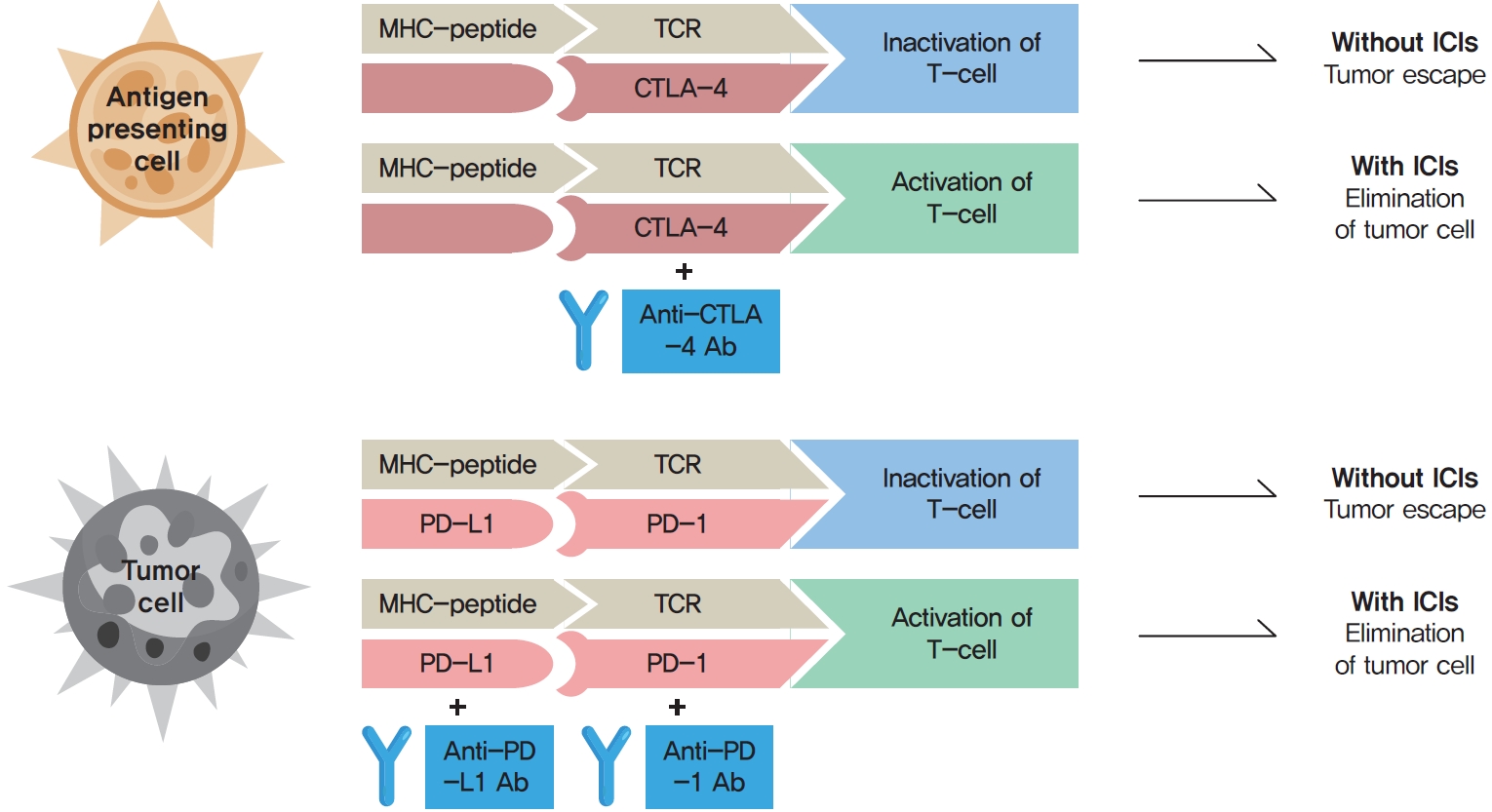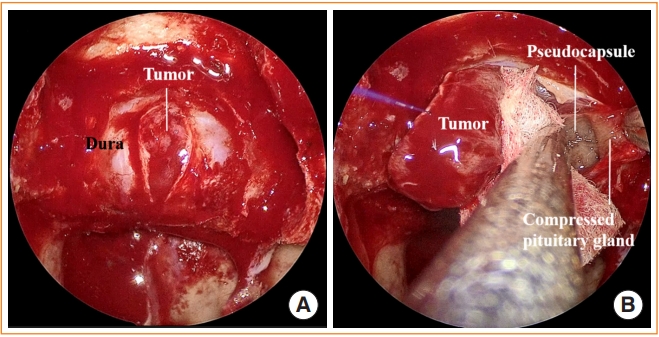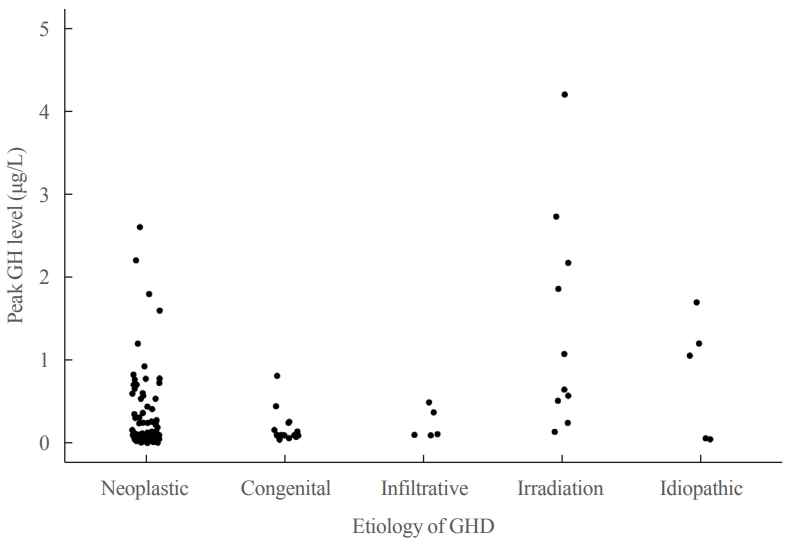Search
- Page Path
- HOME > Search
Special Article
- Miscellaneous
- Immune Checkpoint Inhibitors and Endocrine Disorders: A Position Statement from the Korean Endocrine Society
- Hyemi Kwon, Eun Roh, Chang Ho Ahn, Hee Kyung Kim, Cheol Ryong Ku, Kyong Yeun Jung, Ju Hee Lee, Eun Heui Kim, Sunghwan Suh, Sangmo Hong, Jeonghoon Ha, Jun Sung Moon, Jin Hwa Kim, Mi-kyung Kim, The Committee of Clinical Practice Guideline of the Korean Endocrine Society
- Endocrinol Metab. 2022;37(6):839-850. Published online December 26, 2022
- DOI: https://doi.org/10.3803/EnM.2022.1627

- 3,547 View
- 321 Download
- 2 Web of Science
- 2 Crossref
-
 Abstract
Abstract
 PDF
PDF PubReader
PubReader  ePub
ePub - Immune checkpoint inhibitors (ICIs) including an anti-cytotoxic T-lymphocyte-associated antigen 4 inhibitor, anti-programmed cell death protein 1 (PD-1) inhibitors, and anti-PD-ligand 1 inhibitors are representative therapeutics for various malignancies. In oncology, the application of ICIs is currently expanding to a wider range of malignancies due to their remarkable clinical outcomes. ICIs target immune checkpoints which suppress the activity of T-cells that are specific for tumor antigens, thereby allowing tumor cells to escape the immune response. However, immune checkpoints also play a crucial role in preventing autoimmune reactions. Therefore, ICIs targeting immune checkpoints can trigger various immune-related adverse events (irAEs), especially in endocrine organs. Considering the endocrine organs that are frequently involved, irAEs associated endocrinopathies are frequently life-threatening and have unfavorable clinical implications for patients. However, there are very limited data from large clinical trials that would inform the development of clinical guidelines for patients with irAEs associated endocrinopathies. Considering the current clinical situation, in which the scope and scale of the application of ICIs are increasing, position statements from clinical specialists play an essential role in providing the appropriate recommendations based on both medical evidence and clinical experience. As endocrinologists, we would like to present precautions and recommendations for the management of immune-related endocrine disorders, especially those involving the adrenal, thyroid, and pituitary glands caused by ICIs.
-
Citations
Citations to this article as recorded by- Pembrolizumab plus lenvatinib for radically unresectable or metastatic renal cell carcinoma in the Japanese population
Ryo Fujiwara, Takeshi yuasa, kenichi kobayashi, tetsuya yoshida, susumu kageyama
Expert Review of Anticancer Therapy.2023; 23(5): 461. CrossRef - Incidence of Endocrine-Related Dysfunction in Patients Treated with New Immune Checkpoint Inhibitors: A Meta-Analysis and Comprehensive Review
Won Sang Yoo, Eu Jeong Ku, Eun Kyung Lee, Hwa Young Ahn
Endocrinology and Metabolism.2023; 38(6): 750. CrossRef
- Pembrolizumab plus lenvatinib for radically unresectable or metastatic renal cell carcinoma in the Japanese population

Review Article
- Hypothalamus and Pituitary Gland
- Advances in Pituitary Surgery
- Yoon Hwan Byun, Ho Kang, Yong Hwy Kim
- Endocrinol Metab. 2022;37(4):608-616. Published online August 19, 2022
- DOI: https://doi.org/10.3803/EnM.2022.1546

- 3,259 View
- 156 Download
- 2 Web of Science
- 3 Crossref
-
 Abstract
Abstract
 PDF
PDF PubReader
PubReader  ePub
ePub - Pituitary surgery has advanced considerably in recent years with the exploration and development of various endoscopic approaches and techniques. Different endoscopic skull base approaches are being applied to access sellar tumors in different locations. Moreover, extracapsular dissection and cavernous sinus exploration have enabled gross total resection of sellar tumors where it could not have been achieved in the past. Techniques for skull base reconstruction have also progressed, allowing surgeons to remove larger and more complicated tumors than before. This review article discusses different endoscopic skull base approaches, surgical techniques for removing pituitary adenomas, and reconstruction methods for repairing postoperative low-flow and high-flow cerebrospinal fluid leakage.
-
Citations
Citations to this article as recorded by- Serum and hair steroid profiles in patients with nonfunctioning pituitary adenoma undergoing surgery: A prospective observational study
Seung Shin Park, Yong Hwy Kim, Ho Kang, Chang Ho Ahn, Dong Jun Byun, Man Ho Choi, Jung Hee Kim
The Journal of Steroid Biochemistry and Molecular Biology.2023; 230: 106276. CrossRef - Pituitary disease and anaesthesia
Kim Rhodes, Robert John, Astri Luoma
Anaesthesia & Intensive Care Medicine.2023; 24(6): 348. CrossRef - Орфанні ендокринні захворювання: сучасні тенденції хірургічного лікування в Україні
M.D. Tronko, B.B. Guda
Endokrynologia.2022; 27(4): 287. CrossRef
- Serum and hair steroid profiles in patients with nonfunctioning pituitary adenoma undergoing surgery: A prospective observational study

Original Article
- Hypothalamus and Pituitary Gland
- Metabolic Impacts of Discontinuation and Resumption of Recombinant Human Growth Hormone Treatment during the Transition Period in Patients with Childhood-Onset Growth Hormone Deficiency
- Yun Jeong Lee, Yunha Choi, Han-Wook Yoo, Young Ah Lee, Choong Ho Shin, Han Saem Choi, Ho-Seong Kim, Jae Hyun Kim, Jung Eun Moon, Cheol Woo Ko, Moon Bae Ahn, Byung-Kyu Suh, Jin-Ho Choi
- Endocrinol Metab. 2022;37(2):359-368. Published online April 25, 2022
- DOI: https://doi.org/10.3803/EnM.2021.1384

- 4,464 View
- 185 Download
- 3 Web of Science
- 4 Crossref
-
 Abstract
Abstract
 PDF
PDF Supplementary Material
Supplementary Material PubReader
PubReader  ePub
ePub - Background
Discontinuing growth hormone (GH) treatment during the transition to adulthood has been associated with adverse health outcomes in patients with childhood-onset growth hormone deficiency (CO-GHD). This study investigated the metabolic changes associated with interrupting GH treatment in adolescents with CO-GHD during the transition period.
Methods
This study included 187 patients with CO-GHD who were confirmed to have adult GHD and were treated at six academic centers in Korea. Data on clinical parameters, including anthropometric measurements, metabolic profiles, and bone mineral density (BMD) at the end of childhood GH treatment, were collected at the time of re-evaluation for GHD and 1 year after treatment resumption.
Results
Most patients (n=182, 97.3%) had organic GHD. The median age at treatment discontinuation and re-evaluation was 15.6 and 18.7 years, respectively. The median duration of treatment interruption was 2.8 years. During treatment discontinuation, body mass index Z-scores and total cholesterol, low-density lipoprotein, and non-high-density lipoprotein (HDL) cholesterol levels increased, whereas fasting glucose levels decreased. One year after GH treatment resumption, fasting glucose levels, HDL cholesterol levels, and femoral neck BMD increased significantly. Longer GH interruption (>2 years, 60.4%) resulted in worse lipid profiles at re-evaluation. The duration of interruption was positively correlated with fasting glucose and non-HDL cholesterol levels after adjusting for covariates.
Conclusion
GH treatment interruption during the transition period resulted in worse metabolic parameters, and a longer interruption period was correlated with poorer outcomes. GH treatment should be resumed early in patients with CO-GHD during the transition period. -
Citations
Citations to this article as recorded by- Ghrelin regulating liver activity and its potential effects on liver fibrosis and Echinococcosis
Jiang Zhu, Tanfang Zhou, Meng Menggen, Kalibixiati Aimulajiang, Hao Wen
Frontiers in Cellular and Infection Microbiology.2024;[Epub] CrossRef - Composición de la microbiota en pacientes con déficit de hormona de crecimiento antes y después de recibir tratamiento
Patricia García Navas, María Yolanda Ruíz del Prado, Pablo Villoslada Blanco, Emma Recio Fernández, María Ruíz del Campo, Patricia Pérez Matute
Anales de Pediatría.2024;[Epub] CrossRef - Relationship between the Stimulated Peak Growth Hormone Level and Metabolic Parameters in Children with Growth Hormone Deficiency
Seong Yong Lee
The Ewha Medical Journal.2023;[Epub] CrossRef - Dyslipidaemia and growth hormone deficiency – A comprehensive review
Matthias Hepprich, Fahim Ebrahimi, Emanuel Christ
Best Practice & Research Clinical Endocrinology & Metabolism.2023; 37(6): 101821. CrossRef
- Ghrelin regulating liver activity and its potential effects on liver fibrosis and Echinococcosis

Case Reports
- A Case of Giant Cell Granuloma of The Pituitary Gland.
- Eun Jig Lee, Young Duk Song, Sung Kil Lim, Hyun Chul Lee, Kap Bum Huh, Tae Seung Kim, Sun Ho Kim, Bong Soo Cha, Dong Hun Choi, Jeong Il Jeong
- J Korean Endocr Soc. 1994;10(3):284-288. Published online November 6, 2019
- 1,252 View
- 22 Download
-
 Abstract
Abstract
 PDF
PDF - Granulomatous disease of the pituitary gland are uncommon disorders which are rarely diagnosed in patients presenting for hypophysectomy. The majority of reported cases come from neuropsy material and include infectious and systemic disease such as tuberculosis, sarcoidosis, syphilis and fungal infections. We experienced giant cell granuloma of the pituitary gland in a 47 years-old woman. The patient suffered from headache, polyuria and polydipsia. MR images of brain demonstrated a hyposignaled mass. The fibrous tissues were removed by transsphenoidal approach. The clinical and histopathological features of this rare entity are reviewed.

- A Case Report of Symptomatic Salivary Gland Rest within the Pituitary Gland.
- Tae Ho Kim, Tae Jin Park, Hae Jin Kim, Dae Jung Kim, Yoon Sok Chung, Kwan Woo Lee, Tae Hi Lee, Ho Sung Kim, Kyung Gi Cho
- J Korean Endocr Soc. 2007;22(6):436-439. Published online December 1, 2007
- DOI: https://doi.org/10.3803/jkes.2007.22.6.436
- 1,809 View
- 22 Download
- 5 Crossref
-
 Abstract
Abstract
 PDF
PDF - Although salivary gland tissues in the posterior pituitary are occasionally observed in microscopic examination at autopsy, these tissues are considered clinically silent. Only three examples of symptomatic salivary tissues in the pituitary have been previously reported. We report a case of symptomatic salivary gland rest within the pituitary gland. A 19-year-old woman complained of headache for 2 months, and dizziness, nausea, blurred vision for 1 week. Magnetic resonance imaging revealed a 1.8 cm-sized mass in sella turcica with hyperintensity on T1-weighted images. Basal hormone levels and combined pituitary stimulation test were normal. The trans-sphenoidal approach of tumor removal was performed and a pathological examination confirmed salivary gland rest without any evidence of a pituitary adenoma. The symptoms had disappeared, except for post-operative diabetes insipidus.
-
Citations
Citations to this article as recorded by- Symptomatic salivary gland choristoma of the pituitary gland
Pedro Iglesias, Cecilia Fernández-Mateos, Eva Tejerina
Endocrinología, Diabetes y Nutrición.2022; 69(7): 544. CrossRef - Symptomatic salivary gland choristoma of the pituitary gland
Pedro Iglesias, Cecilia Fernández-Mateos, Eva Tejerina
Endocrinología, Diabetes y Nutrición (English ed.).2022; 69(7): 544. CrossRef - Salivary gland tissues and derived primary and metastatic neoplasms: unusual pitfalls in the work-up of sellar lesions. A systematic review
T. Feola, F. Gianno, M. De Angelis, C. Colonnese, V. Esposito, F. Giangaspero, M.-L. Jaffrain-Rea
Journal of Endocrinological Investigation.2021; 44(10): 2103. CrossRef - Intrasellar Symptomatic Salivary Gland Rest with Inflammations
Yusuke Tanaka, Atsuhiko Kubo, Junichi Ayabe, Masahide Watanabe, Masahiro Maeda, Yukio Tsuura, Yoshihide Tanaka
World Neurosurgery.2015; 84(1): 189.e13. CrossRef - Intracranial Salivary Gland Choristoma within Optic Nerve Dural Sheath: Case Report and Review of the Literature
Eric B. Hintz, Gabrielle A. Yeaney, Glenn K. Buchberger, G. Edward Vates
World Neurosurgery.2014; 81(5-6): 842.e1. CrossRef
- Symptomatic salivary gland choristoma of the pituitary gland

- Primary Pituitary Abscess: An Unusual Case of Diabetes Insipidus.
- Ji Hye Kim, Ji Hyun Park, Tae Sun Park, Hong Sun Baek
- J Korean Endocr Soc. 2006;21(5):408-413. Published online October 1, 2006
- DOI: https://doi.org/10.3803/jkes.2006.21.5.408
- 1,570 View
- 20 Download
-
 Abstract
Abstract
 PDF
PDF - A 58-year-old man was investigated for his complaints of chronic frontal headache. The endocrinologic hormone studies were compatible with diabetes insipidus and suggestive of panhypopituitarism. Sellar MRI showed a cystic sellar lesion with peripheral rim enhancement after contrast injection, and this led to an initial diagnosis of pituitary adenoma with hemorrhagic necrosis. He underwent an operation via the transsphenoidal approach to access the pituitary gland. During the operation, purulent materials were obtained and no tumor or other associated lesions were detected. There was no evidence of current or previous septicemic illness, meningitis, cavernous sinus thrombosis or sinus infection. All the cultures we obtained were negative. He was put on antibiotics and discharged after 4 weeks. Now, 18 months after treatment, he is doing well.

Original Article
- Present Stutus and Perspectives of Androgen Replacement Therapy.
- Soung Seol Kim
- J Korean Endocr Soc. 1997;12(2):139-142. Published online January 1, 2001
- 913 View
- 17 Download


 KES
KES

 First
First Prev
Prev



